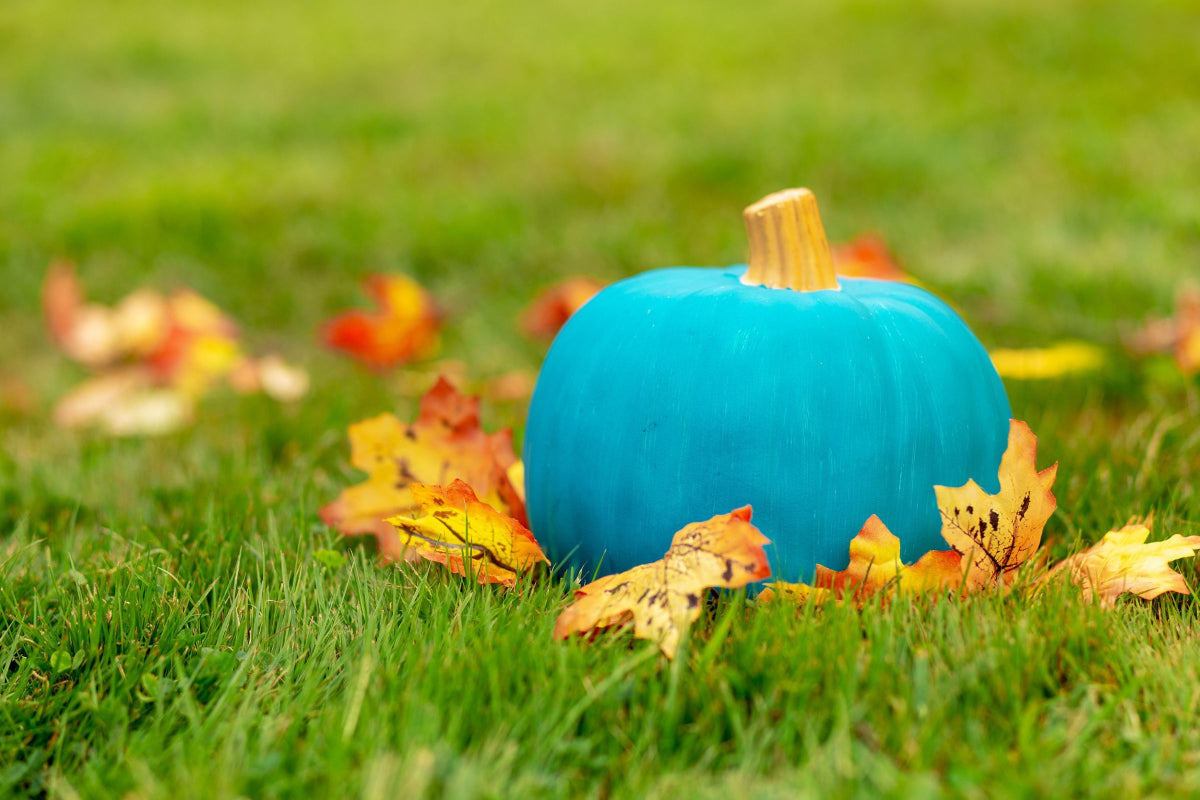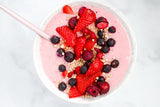
The aisles in your local supermarket and big box store have transformed from Back to School to BOO! Rows of candy in cartoonish goblin- and ghost-themed packaging, smiling plastic pumpkin buckets in all colors, howling decorations designed to thrill and entertain, and rows of costumes in all sizes signal that Halloween is on the way.
Among the assorted decorations and sugary treats, you’ll find a collection of teal hued décor, trick-or-treating buckets, and small toys and gadgets. It’s not just a fun twist on the standard color scheme. It’s a hue with a message – this house (or this trick-or-treater) is allergy aware.
What’s with the Teal Pumpkins?
You’re familiar with colored ribbons and other paraphernalia clueing in those around us to a particular cause we’d like to support or raise awareness about. Pink in October for breast cancer. Red in February for cardiovascular diseases. Teal is the color we associate with food allergy awareness – particularly in May for Food Allergy Awareness Month and in October as we prepare for Halloween.
The Teal Pumpkin Project, created by Tennessee mom Becky Basalone, has been giving allergic children safe Halloween options since 2012. The founder of Food Allergy Community of East Tennessee and a food allergy mom, Becky painted her first teal pumpkin as part of her Trunk or Treat décor at an allergy-friendly event. Two years later, she was approached by FARE (Food Allergy Research & Education) with an offer to help get the word out nationwide. The movement has become a more common Halloween tradition with the aforementioned store displays and an increasing number of homes and trick-or-treaters participating in the tradition.
How Does the Teal Pumpkin Project Work?
Homes wishing to participate in the Teal Pumpkin Project can display a teal pumpkin or a sign to let allergic trick-or-treaters know they’re part of the movement. They should have a separate bowl of non-food treats available to hand out. Trick-or-treaters looking to be part of the movement can carry a teal collection bucket or bag, or just simply keep an eye out for the houses that can accommodate their allergic needs.
Why Do We Do This?
Getting dressed up in costume and heading out into the neighborhood with a gaggle of friends on Halloween is a common childhood tradition in the US. You remember those days, right? You picked out the perfect costume. You couldn’t wait to get dressed up and head out, pillow case or plastic pumpkin in hand. Your neighbors fussed over how scary you were or how regal you looked. They gave you candy and you called out “Thank you!” in unison with your crew. Back at home you poured out your loot and took stock of how many full-sized bars were given out, how many fun-sized favorites you accumulated and, if you were lucky, counted up the spare change that you were given by those homes that just handed out quarters that you could use to play PacMan at the arcade later.
Now imagine not being able to partake in that tradition because those milk chocolate bars and peanut butter cups put you at risk of an anaphylactic reaction. Imagine going through the motions and dumping your bucket out at the end of the night just to create a pile of candy that wasn’t safe for you to eat because of your food allergies.
The Teal Pumpkin Project gives allergic children, and others who are unable to safely participate in an activity focused so heavily on food, a safe alternative. It promotes safety and inclusion for families that live with food allergies and other challenges like diabetes, celiac disease, and more.
What Do I Hand Out?
While there are 9 common allergens responsible for the vast majority of food allergies in the US, a person can be allergic to anything. That means simply avoiding candy with the top 9 common allergens (wheat, milk, egg, soy, peanut, tree nut, shellfish, fish, sesame), is a good start, but it doesn’t meet the objective of the Teal Pumpkin Project. Homes participating in the endeavor should look for small non-food trinkets and treats. Some ideas include:
- Glow sticks
- Bubbles
- Spider rings
- Vampire fangs
- Stickers
- Small toys
- Pencils and mini-notebooks
- Temporary tattoos
- Finger puppets
- Balls
- Craft kits
- Mini-flashlights
- Plastic or other novelty bracelets
You can find more ideas on FARE’s Teal Pumpkin information page. Please note that some non-food items still contain food allergens. Small containers of playdough, as an example, may contain wheat. Review labels on your non-candy items before including them in your teal pumpkin stash.
So, No Candy?
Not necessarily. The Teal Pumpkin Project isn’t looking to replace candy as a trick-or-treat staple. It’s simply looking to augment the experience to make it more inclusive. Go ahead and offer those fun-size Milky Ways and Snickers. Just keep the teal-friendly items in a separate bowl to mitigate the risk of cross-contamination.
Click here for more information about the Teal Pumpkin Project.



